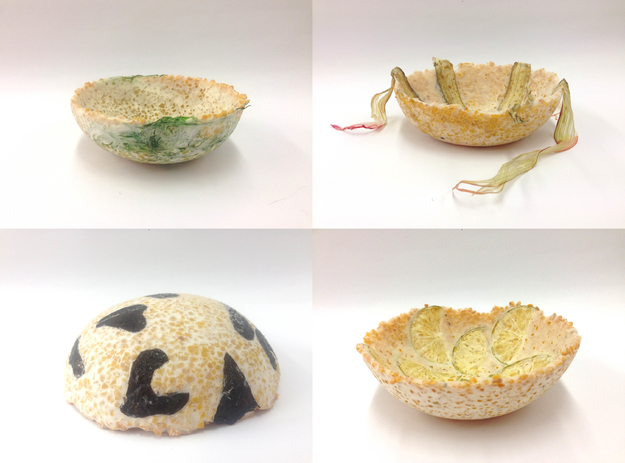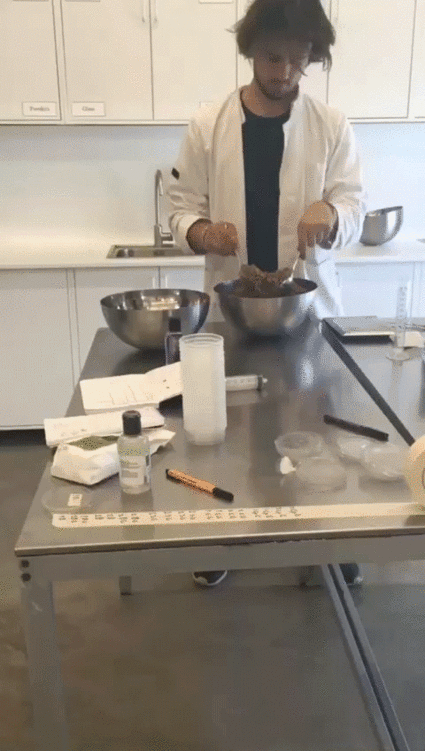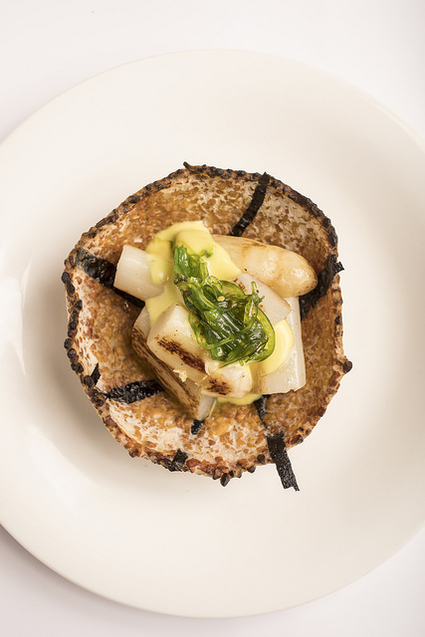With the intention to not only create a more pleasant visual experience, but also a sustainable, bio compostable (you eat it!), healthy and tasty alternative to plastic dishes as well as washing dishes, the team started to research techniques to grow dishes out of tempeh.
During the last weeks we continued the research of the previous LabTeam. We, that is Karenina and Nic.
Karenina is a 20 year old illustrator and student of the University of the Arts in Utrecht and Nic an 23 years old designer who currently studies at the DesignLab department of the Gerrit Rietveld Academy. We both share a great enthusiasm for biology, natural processes, sustainability and new production and material approaches.
The main goal was experimenting and developing methods to modify not only the structure and taste, but also the aesthetics of the Tempeh bowls. By adding and subtracting different nutrients and ingredients we run tests on the change of the materials characteristics.
The first ingredient we discovered to support the growth was vinegar. When used to adjust the materials PH to the perfect value. That creates optimal growing conditions for the organism.
Next in line were our tests with growing edible materials such as seaweed, seeds, dried fruit, spices, flowers, lemons, limes, etc.. It turned out that the mycelium preferred some ingredients over others depending on the PH Value of the fruits, their moistness and the nutrients they provide. We also witnessed that some ingredients completely disturbed the growing process or refused to hold into the mycelium. We concluded that those ingredients had natural repellants within them to protect themselves from fungal infections.

After evaluating our results, the kitchen team prepared the tempeh bowls and researched which flavours fit the menu the best.
We concluded two ingredients fit our cause best: seaweed and limes.
We have now started the production of flavoured tempeh bowls in the lab. This time on a bigger scale in order to cover the demand of the Kitchen. You can taste it now at Mediamatic ETEN since it’s put on the new menu!

